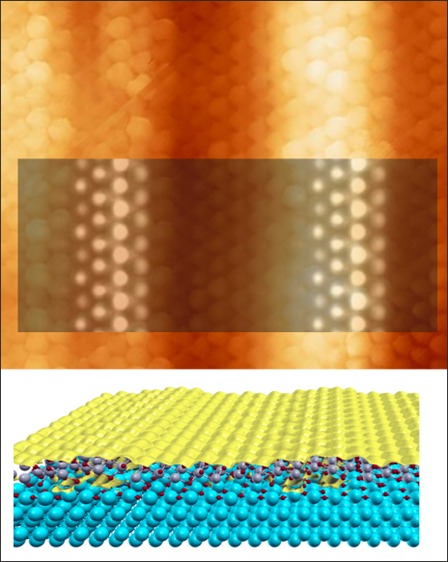- Record: found
- Abstract: found
- Article: not found
Lattice Strain Defects in a Ceria Nanolayer

Read this article at
Abstract

An ultrathin two-dimensional CeO 2 (ceria) phase on a Cu(110) surface has been fabricated and fully characterized by high-resolution scanning tunneling microscopy, photoelectron spectroscopy, and density functional theory. The atomic lattice structure of the ceria/Cu(110) system is revealed as a hexagonal CeO 2(111)-type monolayer separated from the Cu(110) surface by a partly disordered Cu–O intercalated buffer layer. The epitaxial coupling of the two-dimensional ceria overlayer to the Cu(110)-O surface leads to a nanoscopic stripe pattern, which creates defect regions of quasi-periodic lattice distortions. The symmetry and lattice mismatch at the interface is clarified to be responsible for the topographic stripe geometry and the related anisotropic strain defect regions at the ceria surface. This ceria monolayer is in a fully oxidized and thermodynamically stable state.
Related collections
Most cited references38
- Record: found
- Abstract: not found
- Article: not found
Soft self-consistent pseudopotentials in a generalized eigenvalue formalism
- Record: found
- Abstract: not found
- Article: not found
Generalized Gradient Approximation Made Simple.
- Record: found
- Abstract: found
- Article: found
